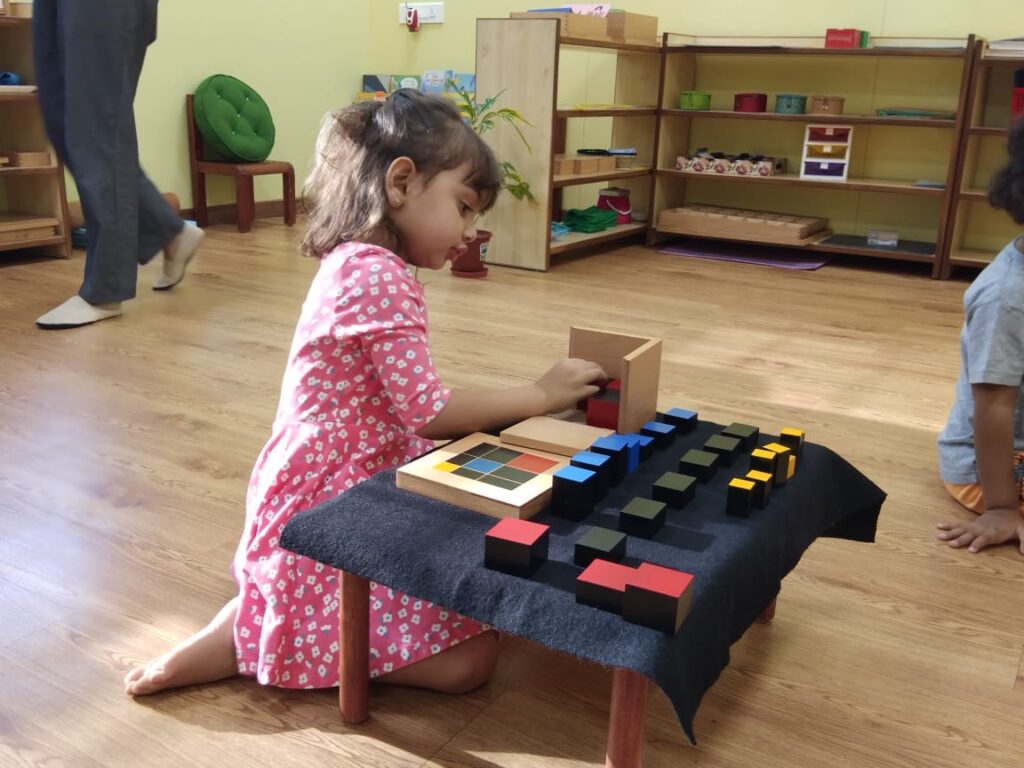Montessori Vs Traditional
“Education is a natural process carried out by the child and is not acquired by listening to words but by experiences in the environment.”
– Dr. Maria Montessori
Mind, Hand and Heart
The traditional educational system was designed during the industrial revolution to train generations of factory workers. Children were instructed to memorize and regurgitate facts – to stop working when the bell rings and ask for permission to move.
This system is no longer relevant.
Today, success is marked by creativity and originality rather than the ability to follow orders. We are expected to adapt quickly to changes in the dynamic world increasingly interconnected by globalization.
Our World needs critical thinkers, entrepreneurs and do-ers.
The Montessori system of education brings together the mind, the hand and the heart of a child to provide a unique educational experience. It is designed to meet the individual developmental needs of each child to maximize his potential. The Montessori System helps develop leaders who can think independently and creatively. To know about some of the most successful Montessorians and Montessori promoters, check this.
| Montessori Education | Traditional Education |
| Views the child holistically, valuing cognitive, psychological, social, and spiritual development. | Views the child in terms of competence, skill level, and achievement with an emphasis on core curricula standards. |
| Teacher has unobtrusive role in classroom activity; child is an active participant in learning. | Teacher has dominant, active role in classroom activity; child is a passive participant in learning. |
| A carefully prepared learning environment and method encourages development of internal self-discipline and intrinsic motivation. | Teacher acts as a primary enforcer of external discipline promoting extrinsic motivation. |
| A three year mixed age group leads to collaborative, supportive and trusting learning environment. | Same age group limit collaboration, support and hence learning among peers. |
| Values concentration and depth of experience; allows uninterrupted time for focused work cycle. | Values completion of exercises, time is tightly managed. |
| Child allowed to spot own errors through feedback from the materials; errors are viewed as part of learning process. | Work is usually corrected by the teacher; errors are viewed as mistakes. |
| Child can work where he/she is comfortable and the child often has choices between working alone or with a group that is highly collaborative among older students. | Child is usually assigned a specific workspace; talking among peers discouraged. |

